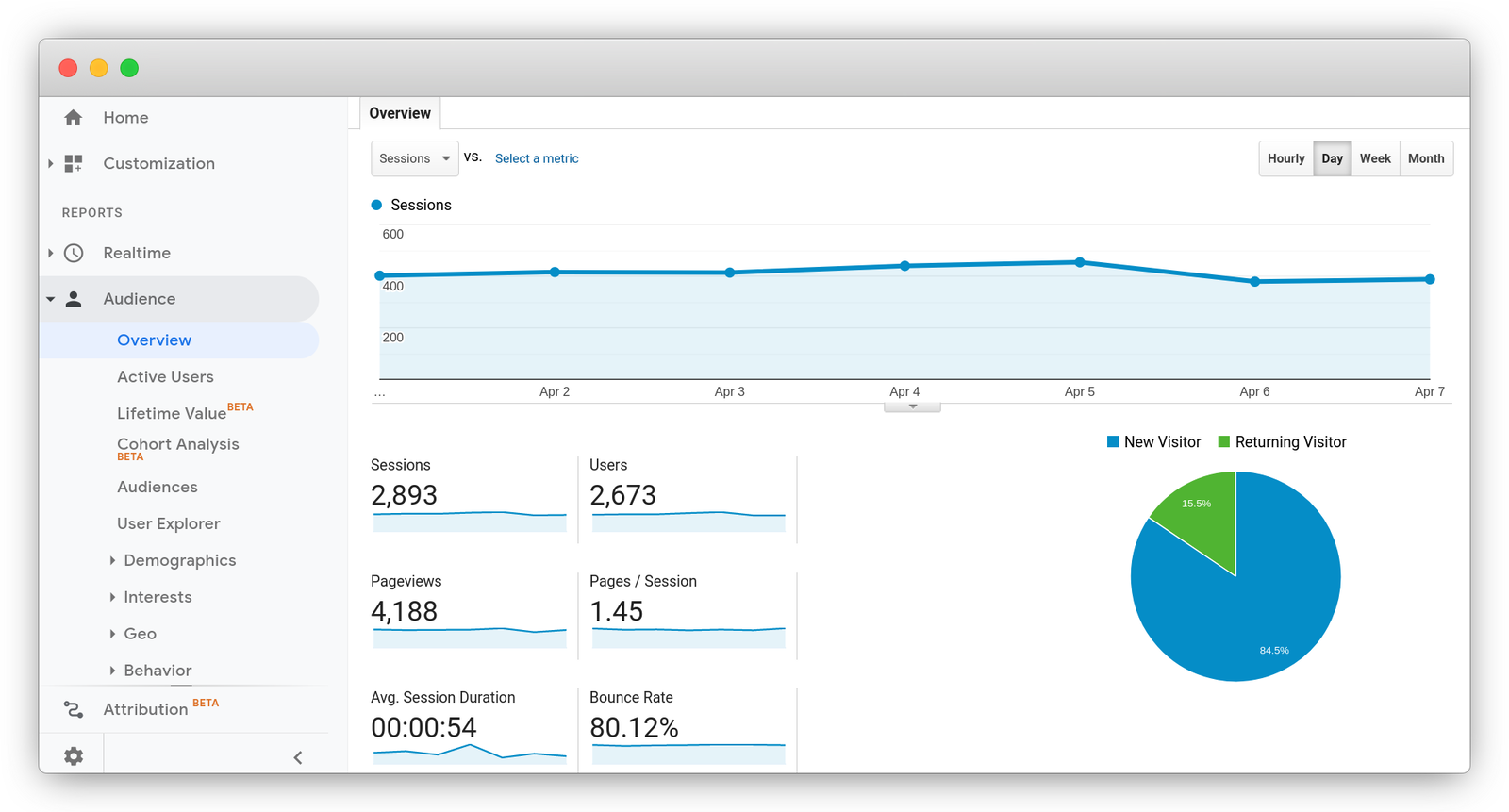Key Factors To Consider for Marketing Experts: When Does the Google Analytics Tracking Code Send an Event Hit to Analytics?
Key Factors To Consider for Marketing Experts: When Does the Google Analytics Tracking Code Send an Event Hit to Analytics?
Blog Article
Enhance Your SEO Strategy With Effective Google Analytics Tracking Code
Integrating Google Analytics tracking code into your Search engine optimization approach is a pivotal step toward accomplishing quantifiable outcomes. What certain strategies can you adopt to optimize the influence of this information on your Search engine optimization initiatives?

Understanding Google Analytics Essentials
To efficiently leverage Google Analytics for Search Engine Optimization, it is necessary to grasp its fundamental principles. Google Analytics functions as a powerful device for monitoring and evaluating web site traffic, offering understandings that are critical for enhancing search engine efficiency. At its core, the system makes it possible for users to keep an eye on user behavior, traffic resources, and crucial performance signs (KPIs) such as bounce rates and session periods.
Knowledge with the user interface is vital. The Audience section gives demographic understandings, helping to tailor material to target customers successfully.
Understanding metrics such as natural web traffic quantities and conversion rates is important for reviewing search engine optimization performance. Ultimately, understanding these basics enables electronic marketing professionals to harness the full capacity of Google Analytics, driving informed choices that enhance general search engine optimization techniques. By developing a solid foundation, services can effectively assess their efficiency and identify opportunities for improvement in their on-line presence.
Establishing Monitoring Code
Properly establishing the tracking code is vital for accurate data collection in Google Analytics. The very first action entails producing a Google Analytics account and residential property, where you will certainly receive an one-of-a-kind tracking ID. This ID is crucial for connecting your website's data to your Google Analytics account.
Once you have your monitoring ID, incorporate the monitoring code fragment right into your site's HTML. This is typically put in the header area of each page to guarantee it loads early in the page making procedure. If you're utilizing a Web content Management System (CMS) like WordPress, numerous plugins streamline this process, allowing you to include the monitoring code without straight HTML editing and enhancing.
After implementing the tracking code, it is essential to test its performance. You can use the Google Tag Aide tool to verify if the tracking code is correctly set up and working. Additionally, keep track of the real-time coverage feature in Google Analytics to verify that data is being collected appropriately.
Guaranteeing that the monitoring code is correctly set up lays the foundation for efficient data analysis, enabling you to make informed choices to improve your SEO strategy and total website performance.
Key Metrics to Screen
Recognizing key metrics to keep an eye on is necessary for recognizing the effectiveness of your search engine optimization approach with Google Analytics. By focusing on specific data factors, you can gauge the impact of your optimization efforts and make educated decisions to enhance efficiency.
Among the main metrics to track is natural website traffic, which shows the number of site visitors coming to your website via search engines. This metric reflects the overall health of your SEO technique. Next, keep an eye on the bounce rate, which reveals the percentage of site visitors who leave your site after watching only one page. A high bounce rate may signify that your content is not fulfilling individual expectations or that your landing pages require renovation.
Furthermore, take into consideration tracking conversion rates, as these metrics reveal how well your site fulfills its service purposes, such as creating sales or leads. Key words rankings are also important; surveillance changes in keyword placements helps review the efficiency of your targeted search engine optimization efforts. Ultimately, analyze the typical session duration, which shows individual interaction and material relevance. By closely complying with these crucial metrics, you can obtain beneficial insights into your SEO strategy's performance other and determine areas for enhancement.
Studying Individual Actions
Recognizing customer behavior is important for improving your Search engine optimization approach and making the most of site efficiency. Google Analytics supplies a wide range of information on customer involvement metrics, such as bounce prices, time on website, and web page sights per session.
In addition, tracking customer circulation can disclose usual navigating courses, highlighting prospective traffic jams or areas for improvement. Understanding the article demographics, rate of interests, and geographic places of your site visitors allows for even more tailored web content that talks with their needs. Making use of division features in Google Analytics further improves your ability to evaluate user behavior by permitting you to contrast various target market groups.
Additionally, keeping track of conversion rates and individual actions can supply insights right into the performance of your contact us to action and overall website style. This alternative view of customer habits is necessary for making notified decisions that boost individual experience and drive higher involvement, eventually adding to boosted search engine optimization performance.
Leveraging Insights for Search Engine Optimization
Constantly leveraging insights obtained from individual behavior evaluation can substantially enhance your search engine optimization efforts. By making use of Google Analytics, you can determine key metrics such as bounce prices, session duration, and user circulation, which reveal just how visitors connect with your material. These understandings enable you to determine areas requiring improvement, such as high leave pages or underperforming key words.

Furthermore, tracking organic web traffic sources offers clarity on which networks are most reliable, allowing you to designate sources tactically (when does the google analytics tracking code send an event hit to analytics?). By evaluating conversion rates along with traffic information, you can determine which pages drive actual organization outcomes, refining your search engine optimization approach additionally
Incorporating these understandings right into your content strategy not just improves visibility but additionally promotes a more user-centric strategy. Eventually, a data-driven SEO method informed by analytics not just increases rankings yet also straightens your goals with user assumptions, causing sustained development and engagement.
Verdict
Effective application of Google Analytics tracking code significantly improves a search engine optimization strategy by supplying crucial understandings right into user habits and website traffic sources. Checking key metrics such as organic website traffic, bounce rates, you could look here and conversion prices promotes the identification of renovation areas. Furthermore, assessing user demographics and interaction metrics permits a more targeted content technique. Inevitably, leveraging these understandings contributes to fine-tuning search engine optimization initiatives, driving more relevant website traffic, and boosting overall web site efficiency.
Integrating Google Analytics tracking code into your SEO strategy is a pivotal step towards attaining quantifiable results. At its core, the platform enables users to check user behavior, traffic sources, and essential efficiency signs (KPIs) such as bounce prices and session periods.
Comprehending individual behavior is essential for refining your Search engine optimization method and maximizing website performance.Consistently leveraging understandings gotten from individual behavior evaluation can considerably enhance your Search engine optimization efforts.Reliable application of Google Analytics tracking code considerably boosts a Search engine optimization technique by providing vital insights right into individual behavior and website traffic sources.
Report this page